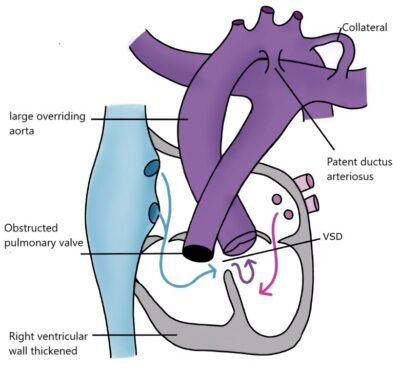Pulmonary Atresia with Ventricular Septal Defect, PA + VSD
In this heart defect, there is no direct connection between the heart and the pulmonary artery, and blood flows to the lungs via the ductus arteriosus or additional vessels, known as collateral vessels. There is a hole in the ventricular septum. The oxygen-rich and oxygen-poor blood entering the ventricles mixes. Typically, the right ventricle is of normal size and can pump blood effectively. Pulmonary vessels can vary greatly among individuals.
After birth, the child is given continuous intravenous medication to prevent the closure of the ductus arteriosus until heart surgery can be performed. The child urgently needs a shunt to ensure blood flow to the pulmonary artery. The best possible treatment plan for the child can be developed only after thorough examinations. Often, the first procedure is a shunt operation to increase blood flow to the lungs. During this auxiliary procedure, it may be possible to connect multiple collateral vessels together (unifocalization) to construct the missing pulmonary artery tree. If the pulmonary vessels have developed to a normal size, a complete repair of the defect can be performed. This involves connecting the right ventricle to the pulmonary circulation using a valved conduit or a vascular graft (homograft) and closing the ventricular septal defect. If the pulmonary vessels are very small, multiple shunt operations may be necessary. This heart defect cannot be completely corrected, and patients require lifelong cardiac monitoring.
